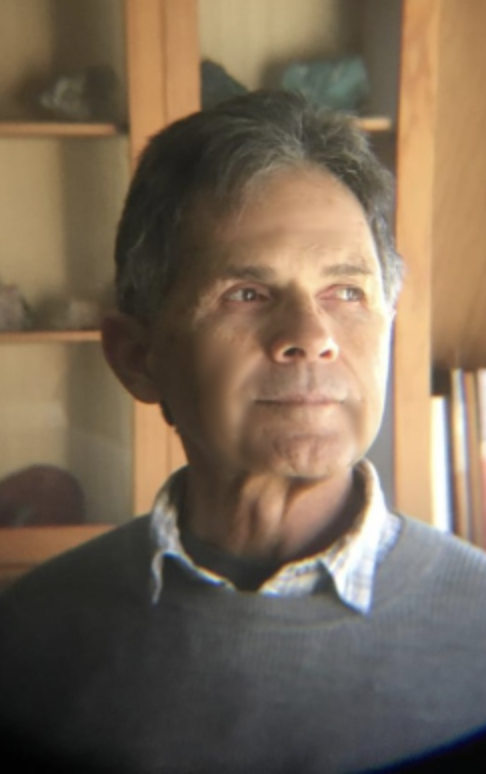Editor’s note: Amigos805 welcomes local guest columns, letters to the editor and other submissions from our readers. All opinions expressed in submitted material are those of the author and do not necessarily represent the viewpoint of Amigos805.
 By David Magallanes • Guest contributor
By David Magallanes • Guest contributor
As I write this, the wind outside is causing trees to sway and birds in flight to move erratically. These must be the March winds in April.
I recalled reading about the beliefs of the Aztecs regarding the wind. They surmised that the wind served as a bridge between the realms of the physical and the spiritual. They depicted Ehécatl, the Aztec god of the wind, as the sacred entity that breathed life into humanity.
The Aztecs venerated the wind and lived in awe of its dual nature; it gave life, but it could also chaotically take it away. For them, the wind carried both messages and benedictions from the gods. It was a transformative force to be reckoned with. It moved and changed the elements of the world around them.
Some of the Aztec rituals dedicated to Ehécatl, one of the manifestations of the major god Quetzalcoatl, were centered on the divine nature of the wind. These solemn traditions conducted by priests and priestesses took place on mountaintops or fields, where the palpable force of the wind would play a part in the experience. The use of feathers and incense, representing the lightness of the wind, were part of these rituals.
The wind can also be a harbinger of danger. We watch in horror the reports that show us the wind blowing the embers of a fire, demolishing homes and trees and killing the unfortunate victims of its cruel and impersonal wrath. These images reinforce the notion that the life that wind bestows can be snuffed out as quickly as the flame of a candle. Hence the dual nature of the wind, by which life and death are two sides of the same coin.
I often stop to look at a sculpture at a boat marina near my home that depicts a boy and girl, both possibly around the age of 10 or 12. The boy is barefoot, looking through a telescope, while the girl, facing him, outstretches her arms and arches forward.
The way the girl’s dress and hair are pushed back suggests that the wind is blowing into her face as she looks upward and smiles rapturously. Her face is lit with ecstatic joy as she seems to revel in the freedom and exhilaration that the wind inspires in her. For her, the wind is life itself, enveloping her in its celestial nature as it appears to play with her hair and caress her face.
— David Magallanes is a retired professor of mathematics.
***
La Naturaleza Enigmática del Viento
Por David Magallanes • Columnista invitado”
Mientras escribo esto, el viento afuera hace que los árboles se mezan y que las aves se muevan erráticamente. Deben ser los vientos de marzo en abril.
Recordé haber leído sobre las creencias de los aztecas respecto al viento. Suponían que el viento servía de puente entre los reinos de lo físico y lo espiritual. Representaban a Ehécatl, el dios azteca del viento, como la entidad sagrada que infundía vida a la humanidad.
Los aztecas veneraban al viento y vivían maravillados por su doble naturaleza: daba vida, pero también podía arrebatársela caóticamente. Para ellos, el viento transportaba mensajes y bendiciones de los dioses. Sabían que el viento era una fuerza transformadora. Movía y transformaba los elementos del mundo que los rodeaba.
Algunos de los rituales aztecas dedicados a Ehécatl, una de las manifestaciones del dios principal Quetzalcóatl, se centraban en la naturaleza divina del viento. Estas solemnes tradiciones, dirigidas por sacerdotes y sacerdotisas, se celebraban en las cimas de las montañas o en los campos, donde la fuerza palpable del viento influía en la experiencia. El uso de plumas e incienso, que representaban la ligereza del viento, formaba parte de estos rituales.
El viento también puede ser un presagio de peligro. Observamos con horror los relatos que nos muestran cómo el viento aviva las brasas de un incendio, derriba casas y árboles y mata a las desafortunadas víctimas de su cruel e impersonal ira. Estas imágenes refuerzan la idea de que la vida que otorga el viento puede apagarse tan rápidamente como la llama de una vela. De ahí la naturaleza dual del viento, por la cual la vida y la muerte son dos caras de la misma moneda.
A menudo me detengo a contemplar una escultura en un puerto deportivo cerca de mi casa que representa a un niño y una niña, ambos posiblemente de unos 10 o 12 años. El niño está descalzo, mirando a través de un telescopio, mientras que la niña, frente a él, extiende los brazos y se arquea hacia adelante.
La forma en que el vestido y el cabello de la niña están recogidos sugiere que el viento sopla en su rostro mientras mira hacia arriba y sonríe con entusiasmo. Su rostro se ilumina con una alegría extática mientras parece deleitarse con la libertad y euforia que el viento le inspira. Para ella, el viento es la vida misma, envolviéndola en su naturaleza celestial mientras parece jugar con su cabello y acariciar su rostro.
– – David Magallanes es un profesor jubilado de matemáticas.
Editor’s note: Amigos805 welcomes comments on stories appearing in Amigos805 and on issues impacting the community. Comments must relate directly to stories published in Amigos805, no spam please. We reserve the right to remove or edit comments. Full name, city required. Contact information (telephone, email) will not be published. Please send your comments directly to frank@amigos805.com
